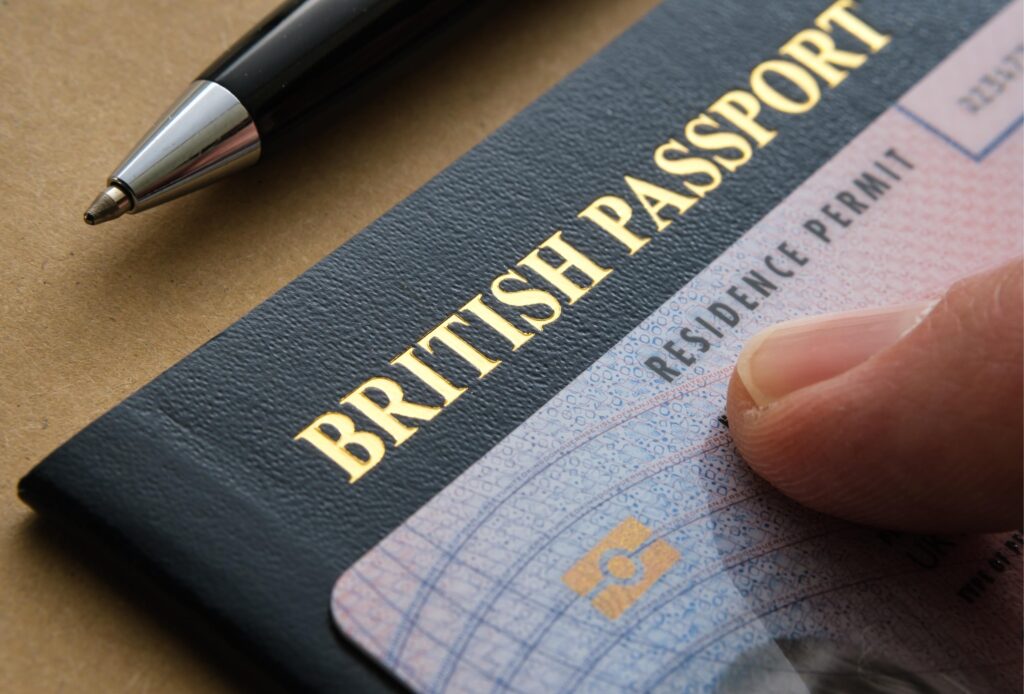Announced earlier this year, a digital immigration system is being developed by the UKVI (UK Visas and Immigration), replacing physical documents with eVisas.
We reported on this digitised system earlier this year, which can be accessed here.
Since then, there have been developments in the roll-out of e-Visas, and this report will digest what an eVisa is, who needs to acquire one, how they do this, and tips for employers as well as recent developments.
What is an eVisa?
An eVisa is an online record of your immigration status and the conditions of your permission to enter or stay in the UK. It is essentially the new way migrants prove their right to work and live in the UK. To access this eVisa, you need to create a UKVI account, where you can monitor the type of permission you have, when it expires, and your conditions of stay in the UK. Within this account, you should always keep your personal details (name, email address, phone number, or passport) up to date, especially before you travel out of the UK, as a failure to do so may result in your travels being delayed/denied. This can be done here.
If you are a British/Irish citizen, you do not need an eVisa, so do not need to take any steps in this regard. This rule also applies if you are a British citizen and a national of another country (other than Ireland), or if you are a Commonwealth citizen with the right of abode in the UK.
Also, those already in possession of an eVisa do not have to take any action (but do need to keep their details up to date on an ongoing basis).
However, those who hold the relevant documents being replaced by eVisa’s will need to take steps to obtain an eVisa. These documents include:
- Biometric residence permits
- Biometric residence cards
- Passport endorsements – such as indefinite leave to enter/remain wet ink stamps
- Vignette stickers in passports, such as entry clearance or visa vignettes
How these individuals obtain an eVisa, and other practical tips
Biometric residence permits (BRP’s)
The Home Office stopped issuing BRP’s on 31st October 2024. All BRP’s issued before this date expire on 31st December 2024 (but please note this is not the same as the expiry of the immigration permission itself). Therefore, those who hold a BRP will need to create a UKVI account to access their eVisa by this date. This step is especially important for those travelling out/into the UK in December and January for example over the holiday period, as if they fail to carry this out before leaving the UK, along with ensuring the information on their account is correct, they may be delayed/denied travel as set out above.
You can use your BRP to create a UKVI account. However, if your BRP has been lost or stolen, you can create an account using a travel document (such as a passport) and visa application reference number. Even if you no longer have your BRP or a travel document, you can still create a UKVI account, provided you were granted permission to enter/stay in the UK before 31st October 2024 and were given a BRP, and you will be told what to do to prove your identity via this route. Alternatively, if you were granted permission to stay in the UK after 31st October 2024 and do not have a BRP or valid travel document, the Home Office will create a UKVI account for you. However, you can no longer request a new or replacement BRP card, and there is helpful guidance on what to do if you have concerns about this here.
Importantly, you should continue to carry your existing BRP when travelling internationally until its expiration. You should also keep your BRP even when it expires, as it can help with future applications.
Passport endorsements/vignette stickers
If you have indefinite leave to enter and/or remain in the UK, and you prove your rights through a passport endorsement such as a wet ink stamp on their passport, or through vignette stickers, you should make a ‘no time limit’ application, which is free of charge. Once this application is decided, you will receive eVisa and will be told how to access this in a decision email or letter.
Importantly, where permitted, individuals can continue providing their right to enter, remain, work and rent in the UK using these existing physical documents. Once they have a UKVI account in place, they can prove their right to rent and work in the UK using the online right to work system.
Biometric residence cards (BRC)
If you have a BRC and have been granted status under the EU Settlement Scheme, you will already have an eVisa and do not need to acquire a new one. Details on how to access this eVisa are contained in a grant letter/email.
However, if you have a BRC and have not been granted status under the Scheme, have obtained another form of immigration permission, or become a British citizen, then your BRC is no longer valid, even if it is still in date.
Therefore, to continue living in the UK, you should get an alternative immigration status as soon as possible, and you should not travel internationally until you have obtained proof of this.
Importantly, you should continue to carry your existing BRC when travelling internationally.
Practical tips for employers
In August 2024, the UKVI began issuing emails to migrants who hold the above immigration documents, but not everyone has received these. It is therefore advisable for employers to be alert to this and inform their employees on the need to create a UKVI account to access their eVisa. They should also inform their employees that once a UKVI account is set up, it takes several days for it to link to their eVisa, so they should encourage them to do this as soon as possible, alongside keeping their personal details up to date, especially if they are planning on travelling.
Once their employees have created a UKVI account and accessed their eVisa, employers should direct them to the form that is available if they have an issue or error with their eVisa, which can be found here.
Employers should also make their employees aware of the form that allows individuals to update their eVisa if they change their personal details, as discussed above, which can be found here.
When conducting right to work checks, employers should always obtain a share code from prospective and existing employees, so they can check their immigration status/permission here.
Generally, employers do not need to carry out an extra right to work check on an employee after the expiration of BRPs on 31st December 2024, as their existing immigration status/permission remains the same and will be as evidenced in the online right to work check that will have been carried out before employment began. However if an employer conducted a manual check when the employee first started working for them, and the BRP had an expiry date of 31st December 2024, then the employer should do a fresh online check before the end of the year to ascertain the true visa expiry date and diarise it accordingly.
Finally, to be alert to any updates on the eVisa roll-out, employers should register for updates on the GOV.UK page. The Home Office will likely amend their guidance on eVisas and completing right to work checks in the coming months, so it is paramount that employers are aware of this.
For more general information about the eVisa roll-out process, please click here.
How can we help?
Alternatively, if you have any queries regarding how this change may affect your organisation, or how you can comply with this change, please contact our immigration team.




